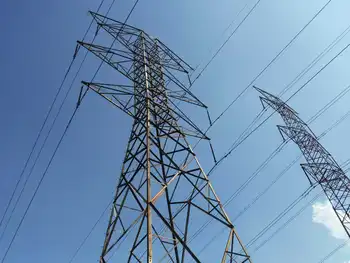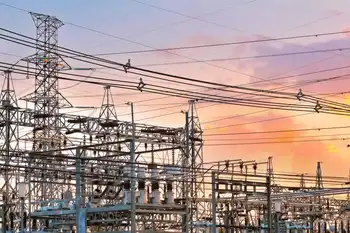Silicon Valley companies demand energy price cut
SAN FRANCISCO - Sept 8 - High-technology companies in California's recession-battered Silicon Valley are pressing state energy regulators to roll back electricity prices charged by Pacific Gas & Electric Co., California's biggest utility. The Silicon Valley Manufacturing Group (SVMG), which represents 180 companies with about 225,000 employees, told the California Public Utilities Commission that steep power prices threaten jobs and the survival of high-tech manufacturers. The commission begins public hearings Wednesday on a proposed agreement to pull the PG&E Corp. utility unit out of bankruptcy in the first quarter of next year. The agreement, which must be approved by the commission and a U.S. bankruptcy judge, calls for a $350 million cut in retail power prices in 2004. But consumer groups have blasted the plan as keeping prices too high and looking to consumers to bail out the utility.
"The increases in California's electricity costs have been so dramatic that manufacturers have not been able to sufficiently offset these increases with cost savings in other areas ... except to lay people off and cut back production," the Silicon Valley group said in testimony filed at the CPUC. "Market share and jobs go to competitors in other states and countries," the industry group said. At the height of California's energy crisis early in 2001, the commission ordered an emergency increase in power rates to help PG&E and two other investor-owned utilities pay for the costs of their wholesale electricity supplies, which had gone up tenfold.
Rates soared as much as 82 percent for large companies, according to commission figures. BANKRUPTCY COURT But that rate boost was not enough to keep PG&E out of the federal bankruptcy court, and the commission also was forced to negotiate a financial rescue plan for Southern California Edison, the utility subsidiary of Edison International . The Silicon Valley group said electricity prices were "allocated disproportionately to large industrial consumers" and a rate reduction next year should be allocated in the same manner. Citing state employment figures, the technology group said Santa Clara County in the heart of Silicon Valley lost almost 147,000 jobs between Jan.
2001 and July 2003, a 16 percent fall. California has lost almost 21 percent of its jobs in the computers and electronic manufacturing sector, while Silicon Valley near San Francisco saw more than 29 percent of those jobs vanish, according to the Center for Continuing Study of the California Economy. These figures "include but do not necessarily call attention to the fact that companies have shifted production to other states where energy costs are more manageable," SVMG said. PG&E has been meeting with large customers and consumer groups in a bid to work out a new rate structure, said Ron Low, a utility spokesman.
"We have talked with SVMG about rates, and will continue to have discussions with representatives of all our customer classes," said Low. In addition to lower energy prices, high-tech companies also want to continue to be able to choose their power suppliers. Silicon Graphics Inc. of Mountain View, California, which makes high-end computers used by defense contractors and Hollywood movie studios, needs "flexibility in managing our costs and we want the choice to select energy providers," said Merey Price, facilities director for Silicon Graphics.
Related News

Growing pot sucks up electricity and pumps out an astounding amount of carbon dioxide — it doesn't have to
VANCOUVER - In the seven months since the Trudeau government legalized recreational marijuana use, licensed producers across the country have been locked in a frenetic race to grow mass quantities of cannabis for the new market.
But amid the rush for scale, questions of sustainability have often taken a back seat.
According to EQ Research LLC, a U.S.-based clean-energy consulting firm, cannabis facilities can need up to 150 kilowatt-hours of electricity per year per square foot. Such input is on par with data centres, which are themselves 50 to 200 times more energy-intensive than a typical office building.
At the Lawrence Berkley National…




